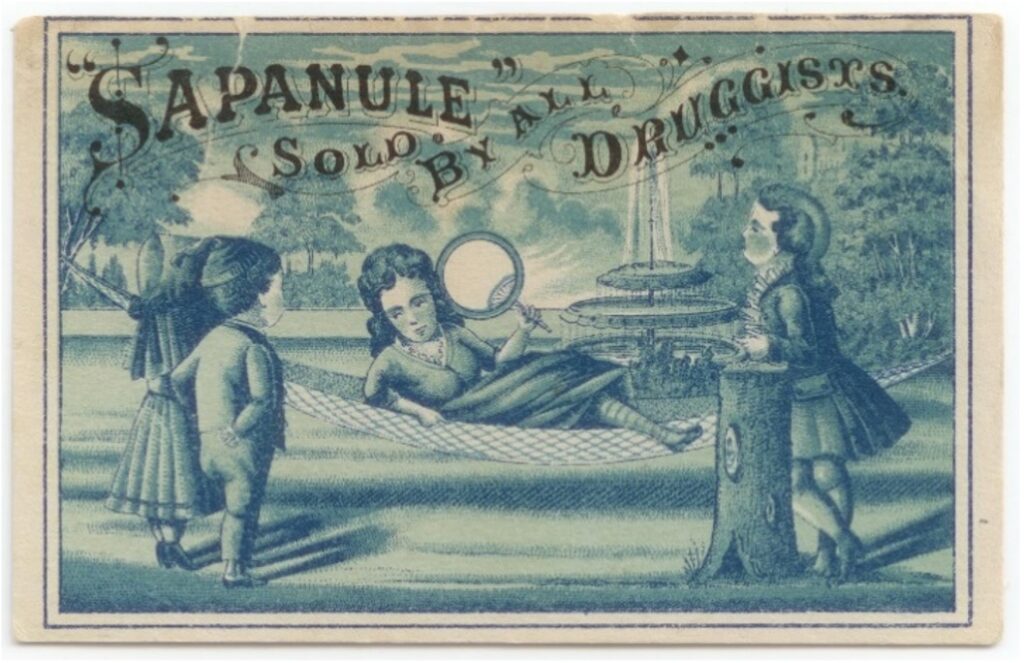The @BeckerLibrary Archives and Rare Books team have been providing a liberal dose of quirky quackery with our new weekly Instagram hashtag #MedicalAdMonday. It’s a showcase of salves, tonics, balsams, and bitters that claim to cure all manner of maladies, from chilblains to catarrh, boils to biliousness. But what was in these patent medicines and did their wild claims really stack up? Let’s examine an ad for one specimen, Sapanule, and take a closer look.

This trade card advertisement for “Sapanule” is a typical example of a patent medicine advertisement from the late nineteenth century. The richly illustrated front appears to have little to no connection to the advertised drug, and the back says it will cure so many ailments you would be forgiven for thinking it might just work even in a case of accidental lycanthropy. In addition, there’s a hearty yet specious testimonial from the president of the ASPCA, who “commend[s] it to all who need Relief from Suffering.”
As it happens, our cover girl—casually lounging in a hammock, provocative leg laid just so—is promoting a lotion. Produced by Samuel Gerry & Co. in the 1880s and 1890s, newspaper advertisements for Sapanule say that the drug is a glycerin lotion and that it “contains nothing injurious to the most delicate organisms, and can be used with perfect safety by all.” Glycerin is an effective moisturizing agent commonly used in dermatological products today, so Sapanule may have helped heal a few of the conditions it claimed to, like scalds, burns, and some symptoms associated with chilblains.

But the card says Sapanule will cure nearly twenty different conditions! Were consumers really just a slather away from solving any problem remotely connected to the skin? Is our lazing lady singing the praises of Sapanule because it had actually cured her rheumatism and relieved her exhaustion?
In short, likely not. While it seems bizarre that consumers believed patent medicines could cure so many and such obviously disparate ailments, Americans in the late nineteenth century had a very different understanding of disease than we do today. The idea that different diseases had different causes, such as micro-organisms like viruses and bacteria, was still in its infancy. Likewise, our understanding that a treatment that works well against one type of disease might not work against a completely different type was not yet common knowledge.
Of course, Sapanule could have contained some other ingredient that might have been effective at soothing all these conditions. Besides glycerin—if it did indeed contain glycerin at all—Sapanule’s other ingredients are unknown. At a time when few of the drugs available were actually effective, many patent medicines contained alcohol and some even contained opium—perhaps that’s the real reason Sapanule’s siren looks so serene.
References
Albert, M.R. (2000). Nineteenth-Century Patent Medicines for the Skin and Hair. Journal of the American Academy of Dermatology, 43(3), 519-526.
Estes, J. W. (1988). The Pharmacology of Nineteenth-Century Patent Medicines. Pharmacy in History, 30(1), 3-18.
Temin, P. (1980). Taking Your Medicine: Drug Regulation in the United States. Harvard University Press.
